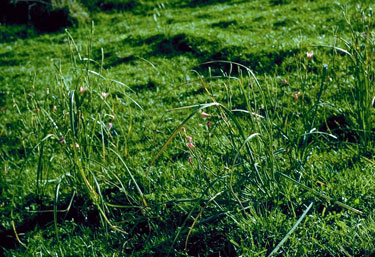A pretty, poisonous and persistent pest
It has pretty flowers, but Cape Tulip is a very poisonous weed.
Gardeners and landowners are urged to be on the lookout for the Cape Tulip, as there is a significant risk of it spreading throughout New Zealand due to its long-lasting corms, which can persist through several growing seasons.
Despite appearances, the Cape Tulip is a highly toxic, non-native plant, and dangerous to both humans and livestock. Every part of this plant, whether fresh or dried, contains poisonous compounds.
It has been known to escape from gardens to neighbouring pasture, and establishment of Cape Tulip in agricultural areas could result in significant economic consequences.
Cape Tulip is both a notifiable organism and an unwanted organism under the Biosecurity Act 1993 and is banned from sale, propagation, and distribution.
It is one of the weeds and pests being eradicated under the National Interest Pest Response programme, led, and funded by Biosecurity New Zealand in partnership with regional councils and the Department of Conservation.
Cape Tulip has spread widely through New Zealand before, so we know what it’s capable of. It was recognised as a noxious plant in New Zealand in 1978, and more than 500 sites have been confirmed since early 1980s.
More than 230 of these sites were located in the Canterbury region, mostly in home gardens. However, eradication from individual sites has been very successful, and now only 29 known Cape Tulip sites remain (of which 10 are in the Marlborough Sounds). Just recently three plants were found in a Canterbury garden.
Symptoms of Cape Tulip poisoning include gastroenteritis, thirst, paralysis, blindness, and heart and kidney failure.
FACTS
- Cape Tulips reproduce by both corms (which can rapidly multiply and spread) and seeds (3,000 to 6,000 per plant).
- It can establish dense colonies over wide areas of pasture.
- Once a site is confirmed, treatment starts, including manual removal or chemical treatment.
- Plants and/or flowers can appear between June and December.
- Plants grow to 90cm tall and have a single, long strap-like leaf. Flowers are usually salmon-pink with a band of deeper colour near the base of the petals, sometimes with a yellow centre.
If you think you have found Cape Tulip, please call Biosecurity New Zealand’s Exotic Pest and Disease freephone 0800 80 99 66 and we will take care of it. Please don’t touch the plants or dig them up

2-May-2024

Cape Tulip flower Credit:Takver-04October2014

Cape Tulip growing wild in pasture, post flowering.

